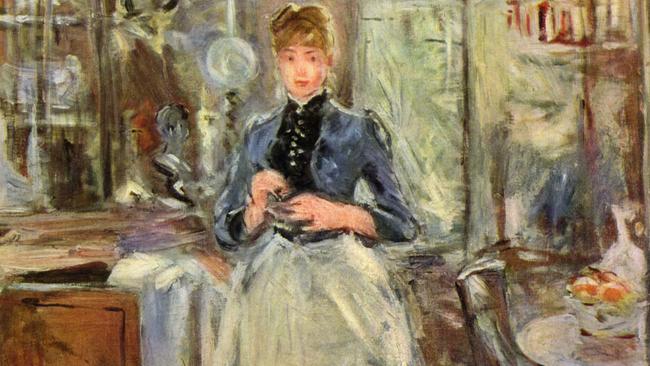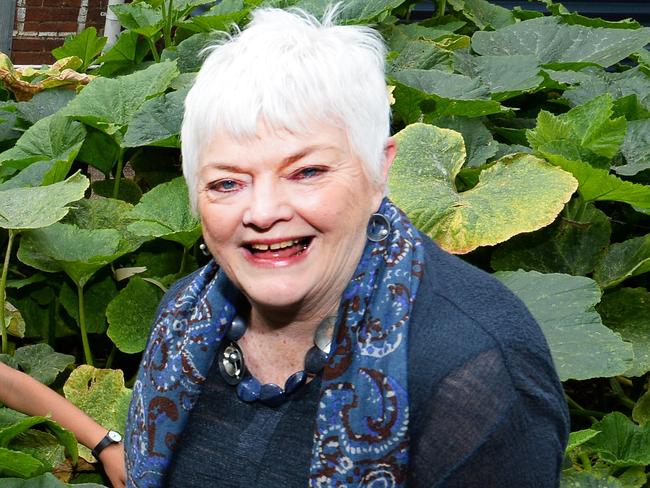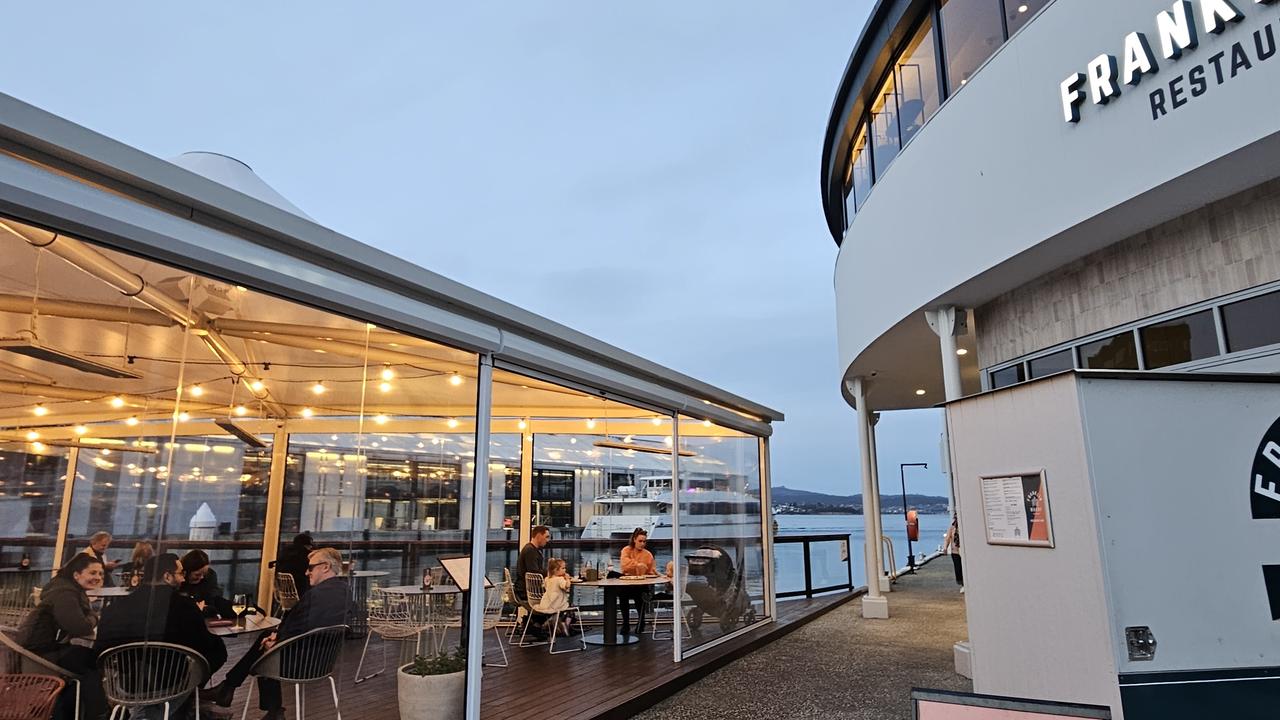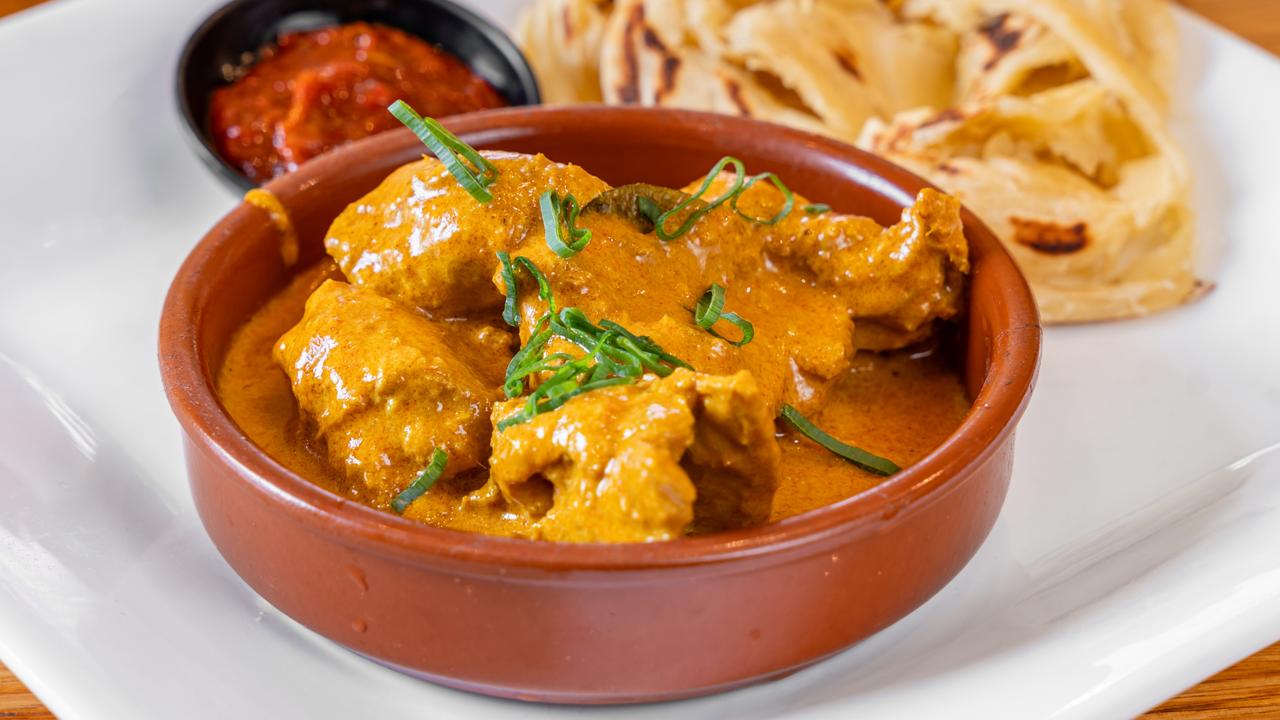Taste: Aprons have it covered
CALL them pinafores if you like, but they have a long history of keeping clothes and food uncontaminated.

Food and Wine
Don't miss out on the headlines from Food and Wine. Followed categories will be added to My News.
IT wasn’t “dinner is served” or “come and get it” when I was a child. “Aprons upon,” my mother would cry and my two sisters and I would don our aprons, which served as napkins.
Our aprons were more pinafores really. They wrapped right around and did up with buttons rather than ties.
Perhaps it is because of this early training that today I wear an apron for all kitchen activities beyond making a cup of tea. And truth be told, if I’ve made something such as laksa and I’m eating alone, as of old, the apron will stay on right through dinner.
I watched in vain for the day Maggie Beer would splatter something on her clothes in The Cook and the Chef. She never wore an apron and never (onscreen, at least) spilt anything on herself.
I asked her once if she had duplicate outfits for when she was filming, but she said no.
Her friend Stephanie Alexander on the other hand told me in an interview: “I can’t cook without an apron. I can’t function. I’d end up with oil, flour and sugar all over me.
“You need an apron.”
If ever there was a case for needing an apron, it’s the one related in Kate Gibbs’s book Margaret and Me (Murdoch Books) about her mother, food writer Suzanne Gibbs, daughter of Margaret Fulton.
Margaret and her daughter were doing the catering for Suzanne’s wedding and, on the day, Suzanne was in the kitchen scrubbing potatoes.
“I had my hair all done up and wore an apron over my white dress. The car was waiting by the front gate to take me to the church.
“Mum came into the kitchen and said: ‘For heaven’s sake Suzie, put down that potato’.”
Cook and food consultant Judith Sweet recently had a cull of her apron collection — now she has a scant 50 rather than 60.
Most she could not part with, either because they had some significance — such as the one she made for her daughter when she was little or the Tasting Italy apron from her first trip overseas — and others would come in handy were she ever to hold a workshop at home.

Judith said she had known herself to come into the house and get straight to work on something she has bought at the market only later to realise that while she was wearing an apron, she still had a handbag or newspaper tucked under her arm.
Curator of the Dark MoFo feast and of MoMa Jo Cook also has “a lovely selection of home aprons”, which she wears when “doing serious cooking”.
She likes to be able to wipe her hands on her thighs and likes long apron strings that go around and tie in the front “so I can hang a tea towel off them”.
I’ve always thought of an apron’s purpose being to save your clothes, and in the days when people had fewer clothes and laundering was much more difficult and harder on fabrics and buttons, aprons were a necessity.
Michelle Crawford, author of A Table in the Orchard (Random House), has another reason for wearing aprons, which she always does when cooking for people other than her family.
“It’s more about hygiene than keeping my clothes clean,” she said.
During a Drysdale training course she was taught that an apron was a “barrier between contaminated street clothes and the food”.
Author Sally Wise always wears an apron because, “I am such a messy cook”.
She also has a Drysdale apron memory. Having handed in a near-perfect result she was told that unfortunately she would have to be marked down. When she asked why, she was told: “Look at the state of your apron!”
Gourmet Farmer and food writer Matthew Evans wears an apron only for the messiest operations.
“I have a beautiful wool butcher’s apron,” he said. “In the old days they wore them because they were warm and blood and fat fell off it, and this did not hurt the wool.
“But I would not wear it for baking because you would end up with glue in the wool.”


